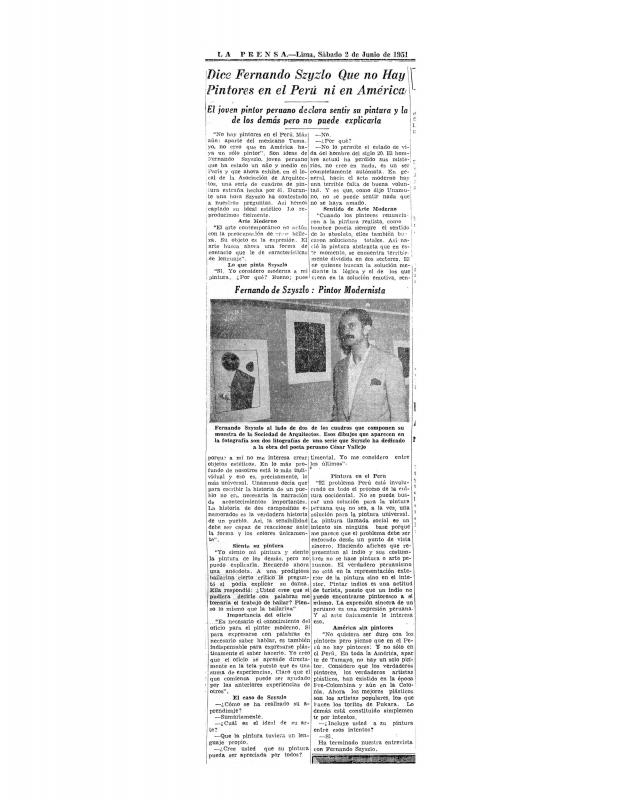In 1955, the artist Fernando de Szyszlo (1925–2017) won the grand prize of the III Salón de Pintura Manuel Moncloa, a contest that eventually became the most important in the Peruvian artistic scene. After returning from Europe four years earlier, he started playing a fundamental role defending abstract art and in its dissemination in his country, not only because of his work but also due to his polemical stance [on this subject, see in the ICAA digital archive “Dice Fernando Syszlo que no hay pintores en el Perú ni América: el joven pintor peruano declara sentir su pintura y la de los demás pero no puede explicarla” (without author) (doc. no. 1137793)]. The success of “non-figurative” art in Lima’s artistic scene became relevant when considering that the previous award was given to Alfredo Ruiz Rosas (1926–2002), an artist that was aligned with the ranks of social realism, another important fact at the time which brought controversial repercussions. Although figurative artists abstained from participating in the III Salón de Pintura Manuel Moncloa, the majority of abstract artists taking part in the Salón was evidence of the success of this trend among young people, which was later confirmed in the following competition of 1958, the I Salón de Arte Abstracto. [For further reading, see the following texts in the archive: “Un ‘pan’ común, de todos los días, amasado por Alfredo Ruiz Rosas, ganó diez mil soles” (doc. no. 859785) by Manuel Jesús Orbegozo; by Luis Miró Quesada Garland “En blanca y negra…” (doc. no. 859805), “En blanca y negra” (doc. no. 859826), “Sobre un arte integral” (doc. no. 1227195), and “Sobre un arte integral” (doc. no. 859917); and by Alejandro Romualdo Valle “Sobre un arte integral (respuesta al arquitecto Luis Miró Quesada G.)” (doc. no. 1227139), “Sobre un arte integral: punto final” (doc. no. 1227176), and “Ruiz Rosas y un arte integral” (doc. no. 1227027)].









